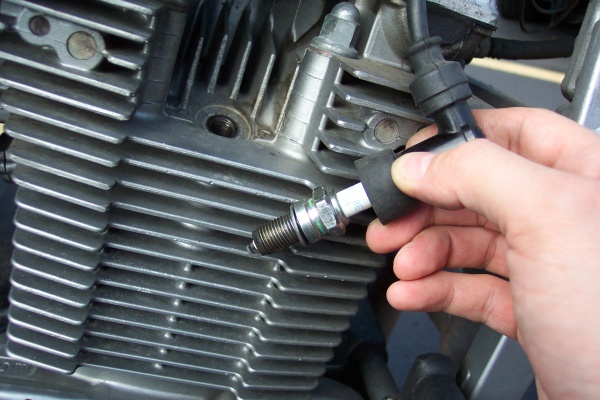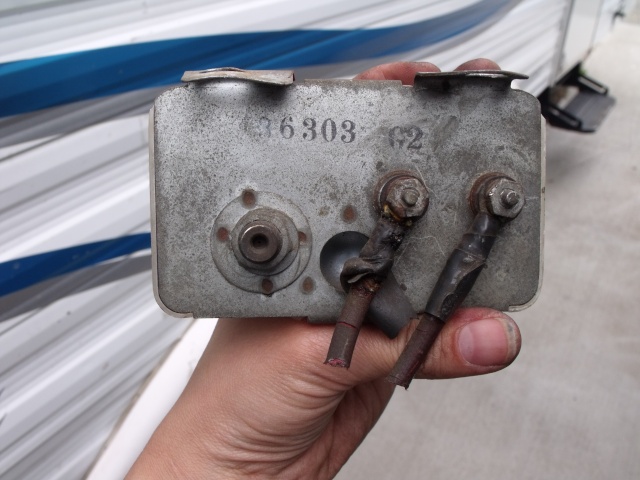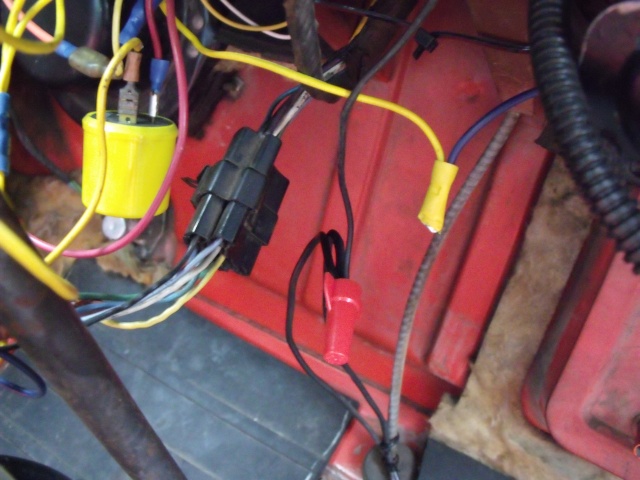Van Doesn't Start Checklist
NOTE: I wrote this for a new member with a Dodge. I will come back and edit it for the other makes later.
You must have a fully charged battery with good cables and connections. Don't even try with a weak battery and some jumper cables.
Remove the spark plugs. Make sure the engine turns over by hand and has oil in it. No point in starting it if it's going to kill it! Also make sure it's got coolant in it and if it has an automatic, there is fluid there too!
Disconnect the big fat coil wire at the dist. and connect the loose end to the block (Ground in America, Earth in the UK). This is so you don't have a bunch of sparks all over. Attempt to crank it over. Without plugs, it should turn easily and you can check for oil pressure.
You can bypass the starter switch and wiring by using a starter push button or jumping the two terminals on the starter relay. These are the big one and the one with a little cover and screw on Dodges.

If the engine spins and you have oil pressure, continue. If it doesn't spin, either the engine is locked or the starter, relay or wiring is at fault. If it doesn't have oil pressure, fix that before any more attempts!
Now that it spins and has oil pressure, check for spark.
Since the key switch provides the power for the coil, you must either have the switch working or "hot wire" the coil. If the key cranks the engine, continue. If the switch doesn't work, either fix the wiring (smart, since it gets the van closer to really running) or connect a jumper wire from the big connector on the relay or the battery to the ballast resistor opposite the wire that goes to the coil. This bypasses the ignition switch as shown.

This will get hot and you should not wire direct to the coil or the coil side of the ballast. Remember, to stop spark (and the engine), you have to disconnect (usually pull off) this wire. So make sure you think of this before and DURING any emergency!
The big fat coil wire you have connected to ground should be able to be connected to one of your spark plugs. Lay the plug on the engine (grounding the body) and crank the engine. There should be spark at the plug. I do not recommend holding the plug as shown unless you LIKE sparks biting you!

If you do not have spark, you will need to check for power to the coil. Also check the points and condenser. You must have spark to continue!
So now you have crank and spark. Hopefully during this you heard the engine pumping air out of the spark plug holes. That's compression.
Now all you need is timing and fuel. We will assume that this was a running engine at one time and that the cam timing is good and that the dist. is reasonably close so it will run. All of this will need to be checked if the engine will not run later.
Install the spark plugs (new ones if the old ones are fouled) and connect the coil wire to the dist. cap.
At this point, you should have an engine that cranks, with spark. Before cranking, operate the throttle while looking down the carb. There should be a squirt of fuel when the throttle is opened. If not, either there is no fuel in the carb, or it needs to be rebuilt (or both).
You can try some starting fluid (ether) but be warned it take practice and fire is a common result!
Crank the engine over and it will hopefully start. There are a bunch of things that can cause it to be hard to start, but you have eliminated most of them. If it refuses to start, check the ignition timing, the carb, fuel supply, and last, cam timing.
NOTE: I wrote this for a new member with a Dodge. I will come back and edit it for the other makes later.
You must have a fully charged battery with good cables and connections. Don't even try with a weak battery and some jumper cables.
Remove the spark plugs. Make sure the engine turns over by hand and has oil in it. No point in starting it if it's going to kill it! Also make sure it's got coolant in it and if it has an automatic, there is fluid there too!
Disconnect the big fat coil wire at the dist. and connect the loose end to the block (Ground in America, Earth in the UK). This is so you don't have a bunch of sparks all over. Attempt to crank it over. Without plugs, it should turn easily and you can check for oil pressure.
You can bypass the starter switch and wiring by using a starter push button or jumping the two terminals on the starter relay. These are the big one and the one with a little cover and screw on Dodges.

If the engine spins and you have oil pressure, continue. If it doesn't spin, either the engine is locked or the starter, relay or wiring is at fault. If it doesn't have oil pressure, fix that before any more attempts!
Now that it spins and has oil pressure, check for spark.
Since the key switch provides the power for the coil, you must either have the switch working or "hot wire" the coil. If the key cranks the engine, continue. If the switch doesn't work, either fix the wiring (smart, since it gets the van closer to really running) or connect a jumper wire from the big connector on the relay or the battery to the ballast resistor opposite the wire that goes to the coil. This bypasses the ignition switch as shown.

This will get hot and you should not wire direct to the coil or the coil side of the ballast. Remember, to stop spark (and the engine), you have to disconnect (usually pull off) this wire. So make sure you think of this before and DURING any emergency!
The big fat coil wire you have connected to ground should be able to be connected to one of your spark plugs. Lay the plug on the engine (grounding the body) and crank the engine. There should be spark at the plug. I do not recommend holding the plug as shown unless you LIKE sparks biting you!

If you do not have spark, you will need to check for power to the coil. Also check the points and condenser. You must have spark to continue!
So now you have crank and spark. Hopefully during this you heard the engine pumping air out of the spark plug holes. That's compression.
Now all you need is timing and fuel. We will assume that this was a running engine at one time and that the cam timing is good and that the dist. is reasonably close so it will run. All of this will need to be checked if the engine will not run later.
Install the spark plugs (new ones if the old ones are fouled) and connect the coil wire to the dist. cap.
At this point, you should have an engine that cranks, with spark. Before cranking, operate the throttle while looking down the carb. There should be a squirt of fuel when the throttle is opened. If not, either there is no fuel in the carb, or it needs to be rebuilt (or both).
You can try some starting fluid (ether) but be warned it take practice and fire is a common result!
Crank the engine over and it will hopefully start. There are a bunch of things that can cause it to be hard to start, but you have eliminated most of them. If it refuses to start, check the ignition timing, the carb, fuel supply, and last, cam timing.












